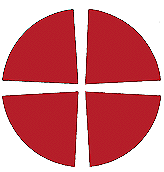 Derby
Methodist
History
Derby
Methodist
History

 Derby
Methodist
History
Derby
Methodist
History

Dr. Adam Clarke, writing from Milbrook, near Prescot, under date September 11th 1817, gave a list of Wesleyan Methodist Chapels in Derbyshire, with the date of their erection. This information he procured from Rev. Daniel Lysons, rector of Bodmaston, Glous., who with his brother, Samuel Lysons, desired to publish a Magna Britannia which should supplement Camden's magnificent, but scarce, work. Below is the data as given by Dr. Clarke, and as corrected by him in a later letter. He said there are many other places where services were held, but 'we never reckoned such preaching places as chapels.'
| Ashbourne | 1771 | Dronfield | 1815 | Masham | 1796 |
| Ashover | 1807 | Edale | 1814 | Melbourne | 1789 |
| Alfreton | 1809 | Eckington | 1807 | New Mills | 1770 |
| Alrewas | 1803 | Eyam | 1781 | Normanton | 1790 |
| Belper | 1782 | Foolow | 1806 | Ockbrook | 1808 |
| Buxton | 1791 | Flagg | 1814 | Quarndon | 1816 |
| Bradwell | 1768 | Finderne | 1816 | Ridgeway | 1806 |
| Breedon | 1790 | Grindleford | 1776 | Repton | C1813 |
| Baslow | 1797 | Great Hucklow | 1806 | Ripley | 1806 |
| Bakewell | 1799 | Glossop | 1814 | Rolleston | 1803 |
| Beeley | 1807 | Hayfield | 1786 | Sawley | 1800 |
| Bremmington | 1814 | Hartshorn | C1813 | Staveley | 1808 |
| Burrowash | 1795 | Hathersage | 1791 | Tansley | 1811 |
| Chelmeston | 1814 | Haslingdon | 1814 | Tichall | 1796 |
| Chesterfield | 1795 | Hazlewood | C1813 | Ticknall | 1791 |
| Chapel-le-Frith | 1780 | Horsley | 1790 | Tidswell | 1793 |
| Critch | 1765 | Heanor | 1806 | Winster | 1810 |
| Castleton | 1809 | Handley | 1797 | Worksworth | 1810 |
| Doveridge | 1804 | Hadfield | 1803 | Woodhouse | 1797 |
| Derby | 1767 | Ilkington | 1790 | Whitfield | 1816 |
| Duffield | 1777 | Kettlehulme | 1808 | Youlgrave | 1806 |
| Draycott | 1790 | Millford | 1816 |
This list shows Chapels in Derbyshire with suggested erection dates. These are questionable in the light of conflicting evidence. For example - the list shows New Mills with the date 1770, but John Wesley's Journal claims that he preached there in 1768. It is also recorded in a number of documents that he preached at the Chapel in St. Michael's Lane, Derby in 1765 but the list shows it opening in 1767.
The Lord's Day Plan for the Derby Circuit, dated 1826, lists numerous Wesleyan societies not shown in the 1817 list of chapels. We know that many Societies met in houses, meeting rooms, schools etc. before their chapel was eventually erected. The Findern Wesleyan Methodist Society met in the 'Hovel', a brick shed, for at least 10 years before their chapel was opened in 1835. It is interesting to note that the Chapel list claims a chapel for Finderne in 1816.
Despite the continued growth of Methodism the first half of the Nineteenth Century was a difficult time with many more groups breaking away from the parent body for all sorts of reasons. There were the 'Church Methodists', the 'Band Methodists of Manchester', the 'Quaker Methodists', the Faith Methodists of Derby and the 'Tent Methodists'. Some societies joined together to become known as the 'Independent Methodists'.
The most successful breakaway group was the 'Primitive Methodist Movement'. A moorland carpenter, Hugh Bourne, formed a group of Methodist revivalists around Mow Cop in Staffordshire, with a little chapel at Harriseahead. A revival also broke out in Tunstall, which resulted in William Clowes being converted. The first English Camp Meeting was held on Mow Cop in May 1807. The Methodist Conference considered that these huge outdoor assemblies were 'highly improper and likely to be of considerable mischief'. Bourne arranged another Camp meeting at Norton and suffered expulsion as a result. William Clowes continued to support Borne and was also expelled along with James Steele of Tunstall for his revivalistic activities. Together they formed a group known as the 'Clowsites'. In 1811 the Clowsites and the Camp Meeting Methodists joined forces taking the name Primitive Methodists.
From then until 1932 most villages and towns had either a Wesleyan chapel or a Primitive chapel and often both.
Quoting from 'Our Chapel' by Beemish -
If 'Orthodox Wesleyanism remained as it had commenced, a religion for the poor', Primitive Methodism 'was a religion of the poor.'
Another split came with the 'Bible Christians', also known as the Bryanites.
The next important break came with the 'Leeds Organ Case'. Opposition against having the organ in Leeds Brunswick Chapel was only part of the problem. It had been installed on the decision of local trustees without support of the District Meeting. The 1827 Conference supported the trustees and reversed the District decision. It was considered that Conference had no power to upset the District ruling and 1000 members with fifty officials seceded to form in 1828 the Protestant Methodists.
Further smaller secessions occurred until a crisis arose over the use of 'Fly Sheets' to attack the rulings of Jabez Bunting and his secretarial colleges. There were as many as five different 'Fly Sheets' and the anonymous writer was almost certainly James Everett. He, along with two other ministers Samuel Dunn and William Griffith, was expelled from the Wesleyan Methodist Connexion for his part in the controversy. 'The three expelled' carried away huge numbers from the mother church to form the 'Wesleyan Reformers' with the Wesleyan Methodists losing 100,000 members. William Griffiths was to become an important citizen of Derby.
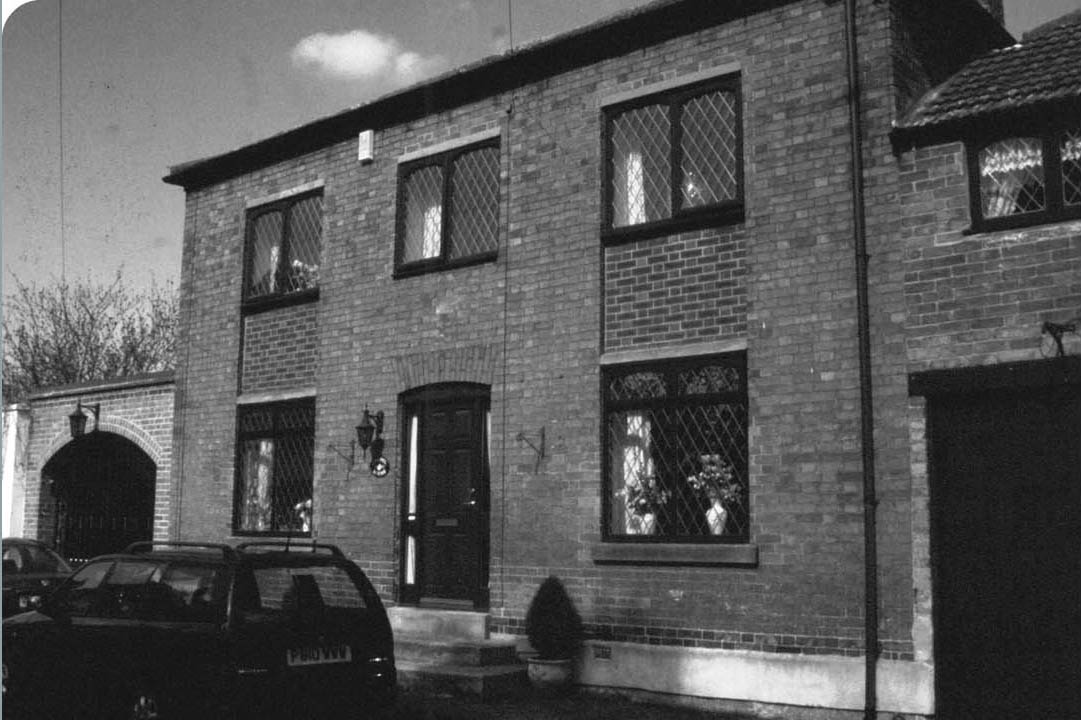
One Bejamin Robinson was registered as a Protestant Dissenter Preacher, denomination not stated, in Mickleover in 1690.
About 1800, John Wright and his brothers, Stephen and Christopher, maintained two 'preaching houses' in the village - one at what is now No 9 The Green, shown above, and one at a house opposite. The present resident at No 9, Mrs Wardle, has a bible dated 1802, which belonged to John Wright.
In 1820 a Wesleyan Chapel capable of holding 200 people was built on the Green.
In 1852, a 'solid red brick chapel' for the Primitive Methodists, capable of holding 100 people was built in Park Road for £100.
The Wesleyan church on Station Road was built in 1914 and became the Mickleover Methodist Church in 1932, the year of the first United Conference of Methodist Churches, when they were joined by the Primitive Methodists from Park Road.
The Station Road church has recently been replaced by the new Methodist Church Centre opened in 2001.
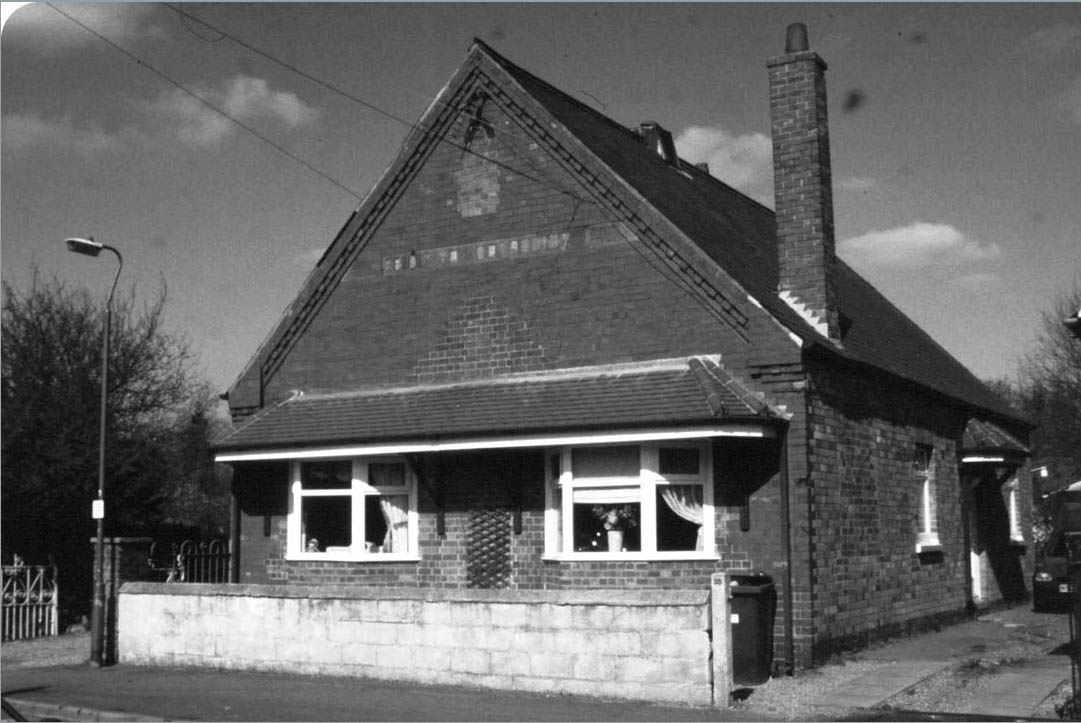
The Primitive Methodist Chapel, Park Lane, Mickleover, now a private house.
There was Wesleyan Methodist activity as early as 1795 but no record of where they met. In 1806 they applied for a Meeting House Certificate to meet in the house shown below, which is now a fast food shop called the Lotus House.
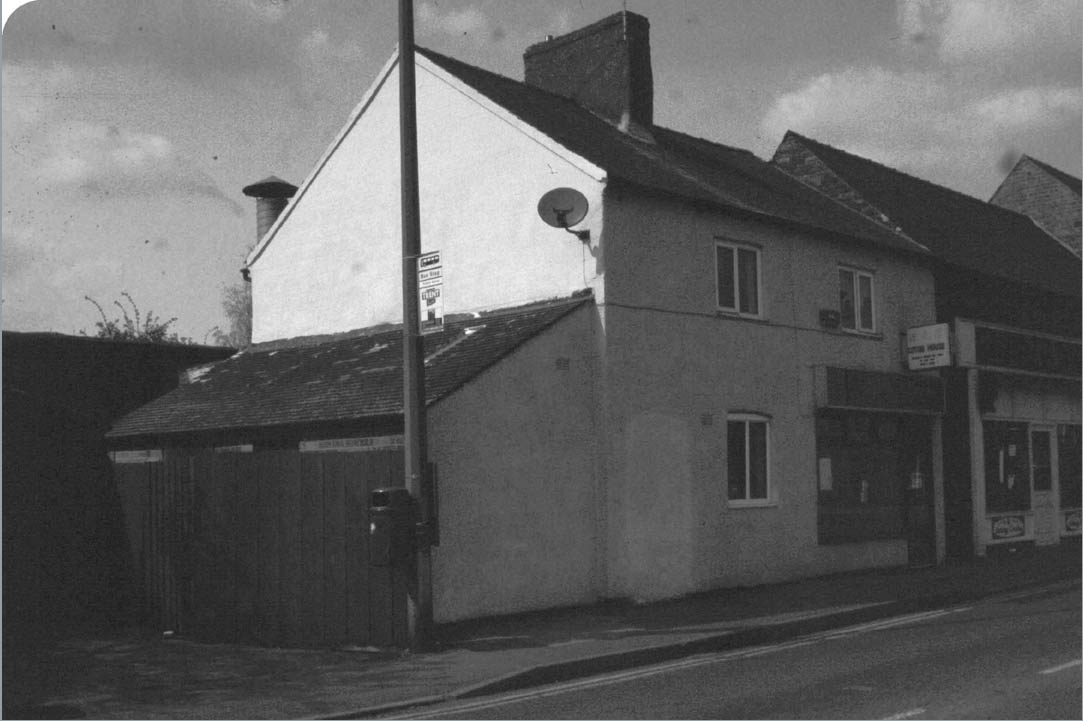
There is also some evidence of the Methodist New Connexion being active in Borrowash on a preaching plan for 1818 at a newly erected building in Shacklecross.
There was rapid growth in Methodism and plans for a new chapel materialised in 1826 (still standing in Chapel Row, shown below, and now used as a carpenters shop). At the opening of this church so many attended it is estimated that Mr Hopwood preached to 300 people in the adjoining field.
80 people rented pews at the rate of 2/- per quarter year.
The 1851 census shows an average attendance of 100 at evening worship with 70 in Sabbath schools.
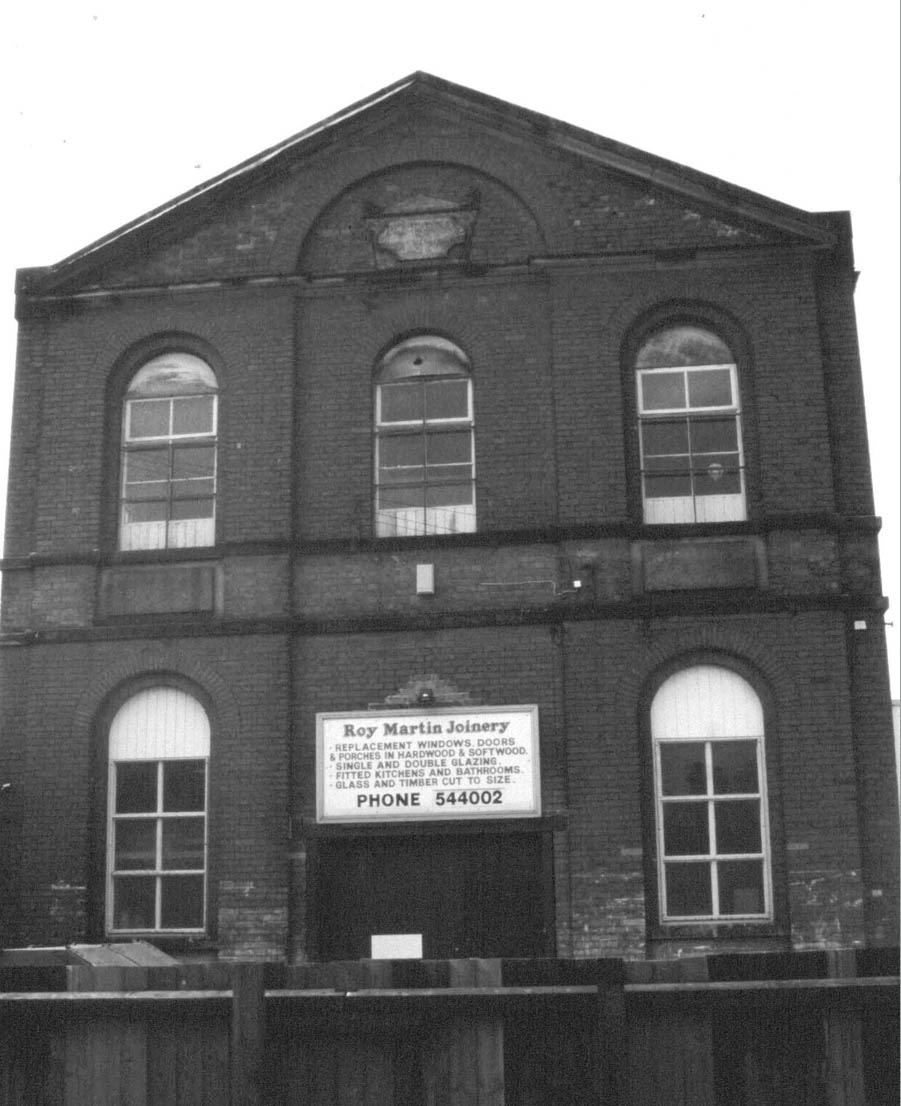
Renting of pews began to fall with the opening of the Primitive Chapel in 1851.
There was a Wesleyan chapel built in 1808 (still standing in Wesley Lane) on Land given at the coming of age by a Mr Wallis. About 1850 in the wake of the Methodist Reform Controversy many of their supporters left Ockbrook and the congregation dwindled.
A primitive meeting house was also built in Ockbrook in 1824 on Moor Lane and meetings took place until they moved into the Wesleyan Chapel in Wesley Lane. The Old Meeting House was demolished in 1961.
The Wesleyans had to vacate their chapel in 1871 for a reason, which is told later under the heading of 'The King Street Safe'. The vacated chapel was then taken over by the Primitive Methodists until 1899 when they built a new chapel. In 1932 the church was renamed Ockbrook Methodist Church and it remained active until 1982 when finance forced a decision to join with the Anglican church. The building was demolished in 1984. There is a link to St. John's at Allestree because Rev. Edward Pape retired to the village of Ockbrook, Len Pape (his son) played the part of John Wesley in the 1952 Pageant, and then Rev. Roy Pape (his grandson) eventually became minister at St. John's Methodist Church, Allestree.
Mr William Clowes, one of the founders of Primitive Methodism, was responsible for the early arrival of this new Methodist Movement in Belper in 1814. Societies were quickly established, in 1815, in Mercaston, Turnditch and Weston Underwood
Primitive Methodism spread rapidly to Derby, which had the honour of being the second Circuit formed in the connexion, Tunstall being the first.
Mr. William Clowes, referring to his work in Belper, says that he proceeded to Milford where a society was formed. From thence he came to Derby, sounding the gospel trumpet and the work was so successful that a small chapel was built in Albion Street in 1817. Mr Clowes tells how, having no friends to take him in, he often went to the Armoury to sleep. He preached in several places in the vacinity including Willington, Boulton, Chaddesden, Draycott (with a chapel in 1824), Windley, Burnaston and Normanton.
The Rev. William Antliff, Minister of Albion Street is reputed to have been the founder of the Derby Temperance Society. From Albion Street the services were transferred for a short period to a chapel in Babington Lane till 1844 when a new chapel was built in Traffic Street.
Dr Samuel Antliff, brother of the minister, along with his colleagues was so successful that larger premises were required. The congregation met in the Corn Exchange for one year while the chapel was replaced in 1865 by the one shown (since demolished).
After the opening of Traffic Street in 1865, the work grew rapidly, and the circuit began to extend. Churches were opened in Kedleston Street, Abbey Street, Central Church (almost a carbon copy of Kedleston Street and still standing today) with others in the town, Campion Street, Mansfield Street, Mount street all being offshoots of the Traffic Street Church. Chapels also opened in a number of villages in the district including Allestree, Borrowash, Littleover, Mickleover, Spondon, Breeston, Burnaston, Dalbury Lees, Langley, Langley Common, Normanton, and Sawley.
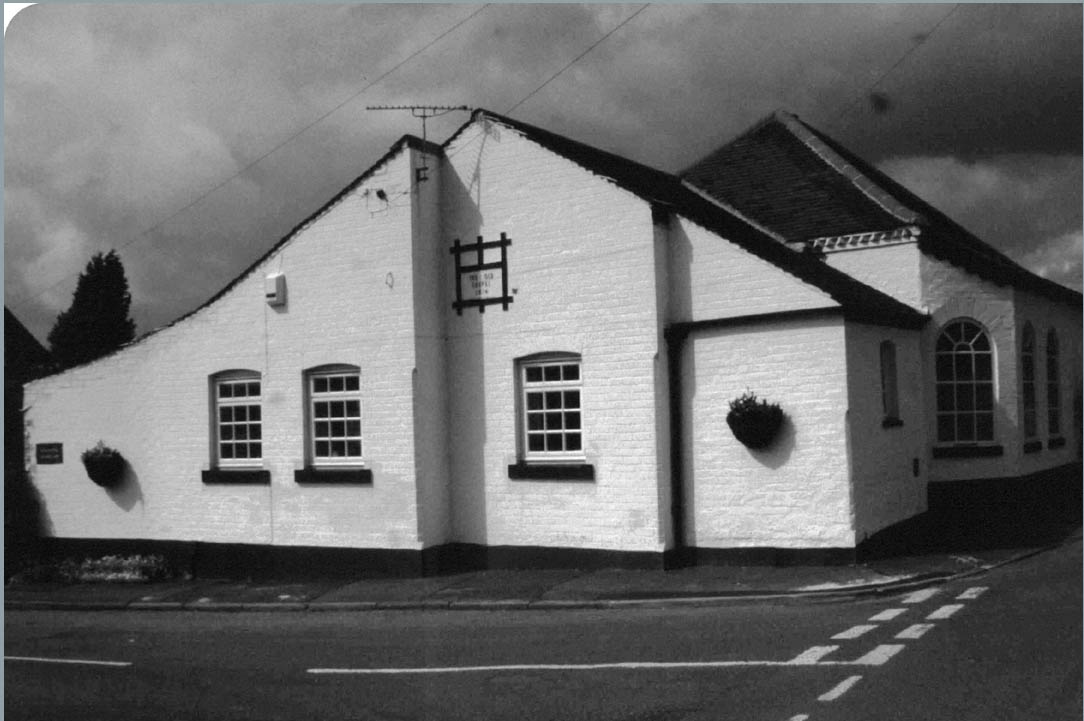
Chellaston's first Wesleyan chapel shown here, was built in Chapel Lane in 1816 and was replaced by a new chapel, in 1873, in the High Street, still an active Methodist church in Derby South Circuit.
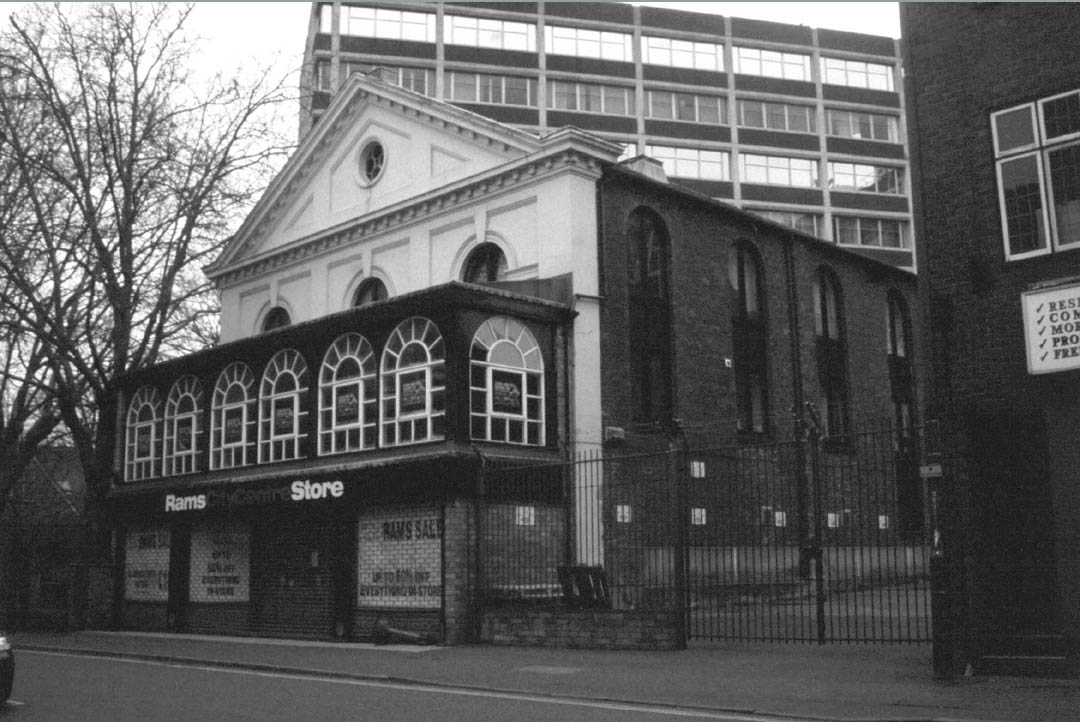
The Green Hill Wesleyan chapel was erected in 1816 as an Independent chapel. The three principle parties responsible for its erection were all butchers and the chapel was nicknamed 'Marrowbones Chapel'. It was sold to the Wesleyan Methodist Connexion and enlarged to hold 800 people. In 1870 the King Street Circuit was divided and Green Hill was made head of the Derby Green Hill Circuit later known as Derby South.
It later became known as Green Hill Central after the Central Primitive Church on the opposite corner had merged with Green Hill.
Both buildings are still there, one in St Peter's Church Yard, but it now has a shop front used by Derby County Football Club and the other is still visible above the shops on the corner of St Peter's Church yard and Green Hill Lane.
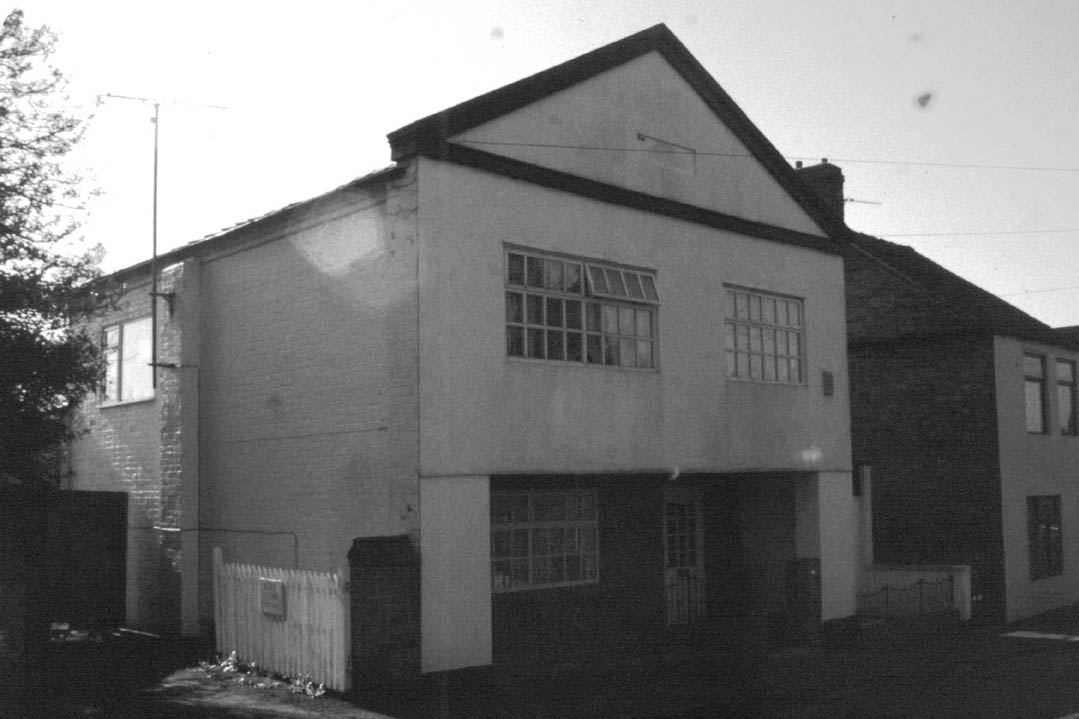
A Wesleyan chapel was built in 1816 (still standing having been used as a shop and now a house in Church Road) and was a member of the Derby Circuit. There was also another chapel as Becket Street Derby Reform Church (built in 1857) prospered with branches opening in Quarndon, Duffield, Little Eaton, Morley Moor and Darley Abbey. Methodism in the village died out in the later half of the 20th Century with the car making it easy for the remaining members to travel to other larger churches.
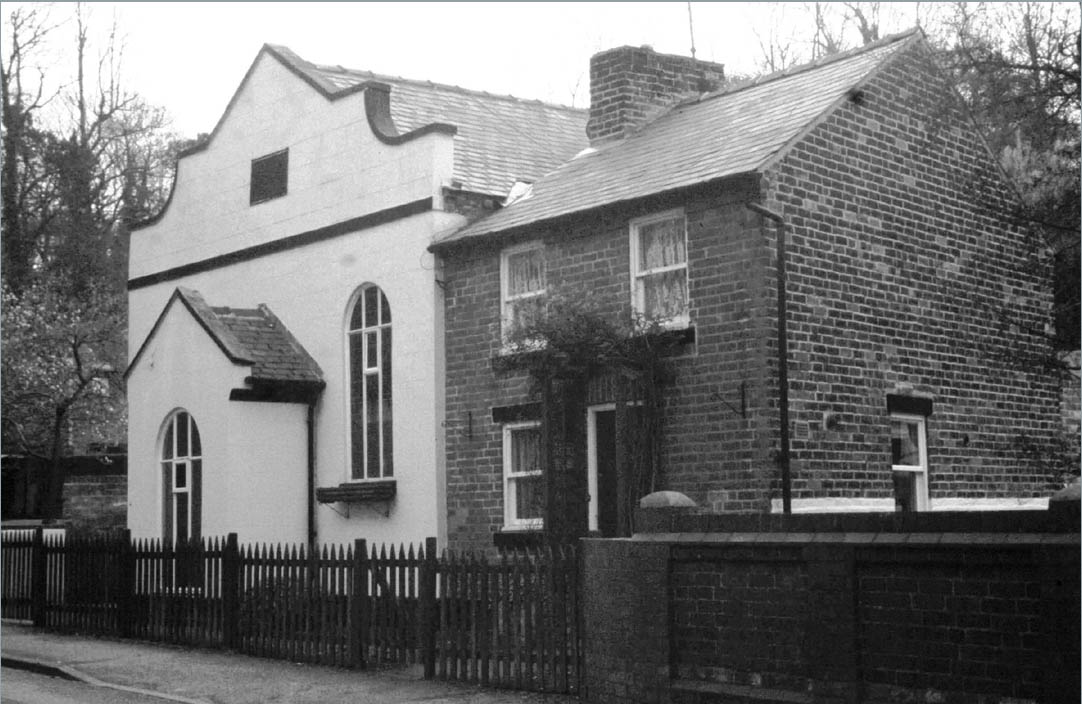
Meetings began in a cottage in Pall Mall C1820 then a house in the Green until the chapel, shown above, opened in 1826. Last used for Worship in 1978, it is now a private house with a commemorative plaque by the door.
Beyond the farm, on the right and facing Cornhill was the Primitive Methodist Chapel, now converted into a house.
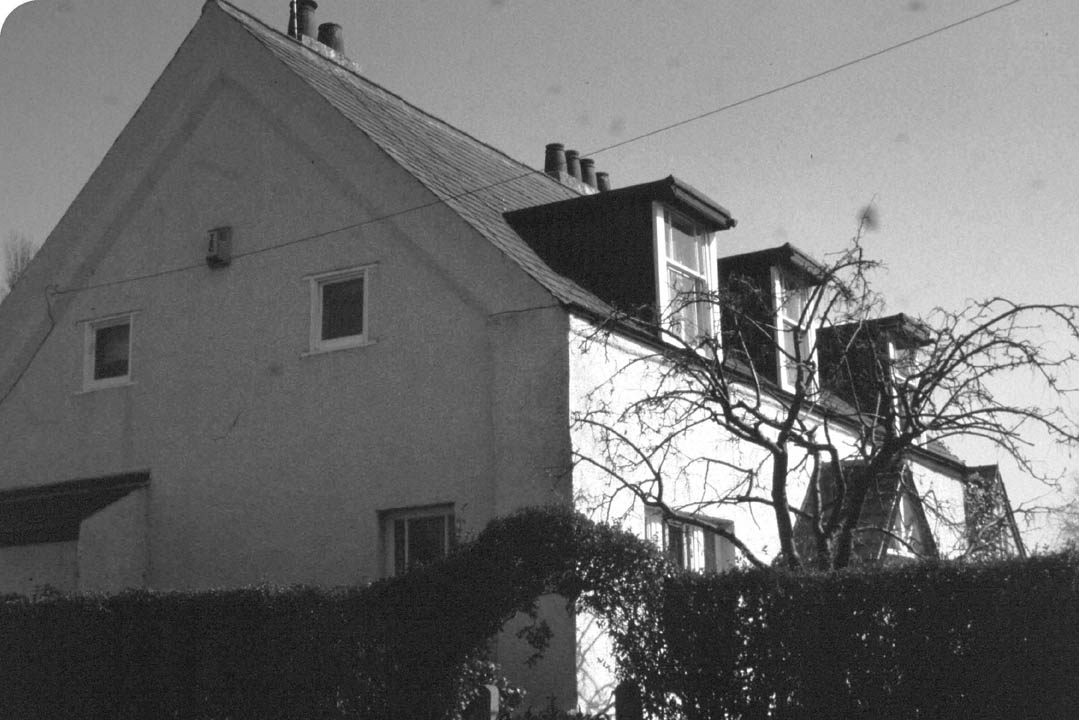
The 'Prims' were a devoutly religious band in those days, loud in their praises and prayers in a broad Derbyshire. At harvests and Love Feasts they would meet at the Bottom End and march up the Cornhill, halting at Cornhill End.
The first Wesleyan Chapel in Allestree was situated in Church Walk, and opened in 1821. It is now two cottages about halfway down on the right hand at the bend. The walk was then known by the much more romantic name of Lovers' Walk. In those days the Methodists attended the Parish Church in the morning, and their own chapel in the evening. Cottage meetings, too, were a distinctive feature of Methodism, and were regularly held in the village.
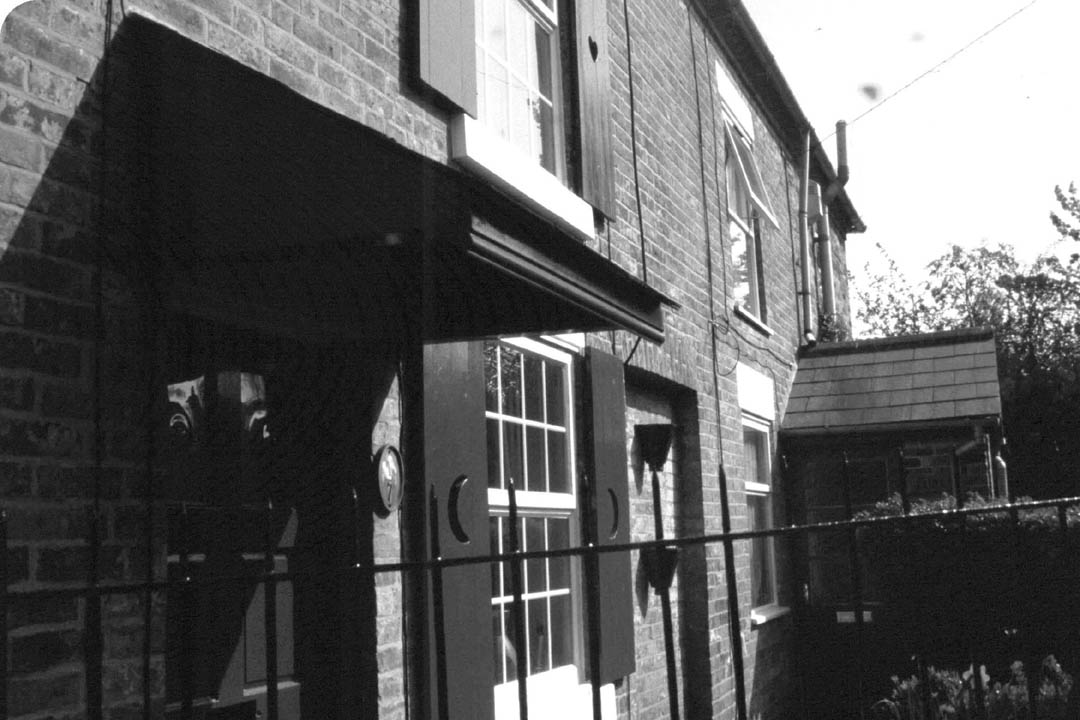
The two cottages that were the original Wesleyan chapel
The second Wesleyan chapel on Duffield Road was built largely through the liberality of Joseph Woolley, and opened on 13th October 1895. For some years he was both Church Warden and Chapel Steward. He made a practice of giving a shilling for each dobbie cart he made and sixpence for each wheelbarrow for missionary work overseas.
The Methodist Chapel at the bottom of Cornhill had been opened in May 1871 and was on land given by the squire, Thomas W. Evans.
'Mackworth' appears in the Lords Day Plan for the Derby Circuit in 1826. The following extract explains further the value of the work.
There was a building near the beginning of Radbourne Lane described as a large picturesque house in which a school had been established and in January, 1829, a Mr Thomas Russell became master at the early age of 21. He was a Methodist, son of a minister who had earlier been stationed in Derby, and had been educated at Kingswood, the well known school established by John Wesley for the sons of ministers because they had 'no abiding dwelling place'.
Thomas Russell ran the Mackworth School as a Methodist school and a number of its boys entered the ministry, one becoming President of Conference and three going to China as missionaries.
In 1849 the School, when at the height of its prosperity, was brought to a close. Mr Russell received notice to quit from the owner of the Mackworth estate, a sad story of the antipathy of those days between Anglican and Methodist but it is known that the action was later regretted.
As far as the writer knows there was no more Methodism in Mackworth for 100 years.
The Love Feast or Agape was a service used in the early church but gradually fell out of use. The Moravian Church had revived it and took the practice to America where John Wesley was introduced to this type of gathering.
This eventually became a regular monthly devotional service which had a formal nature. The original bread and wine being too like communion was dropped and, sometimes, sweet cakes were distributed and tea was used as the drink. A collection for charity was taken with the distribution of the food, the liquid being given in a large two-handled cup and passed from hand to hand.
A deed held by Mr and Mrs Waite of 22 Chapel Lane Chaddesden shows that on 15th August 1828 a shop and ground was sold by Mr William Hingley to appointed Wesleyan Methodist Trustees. Formerly used as a frame work knitters shop it was converted to a Methodist Chapel situated on land which is now their front garden.
A chapel was built in Chapel Lane in 1838 on the same site.
The Trustees sold the chapel to Frank Coleman of Spondon in August 1923 for £80. The Methodists then met in Chaddesden School until 1935. The old day school was converted into a Methodist Church in 1935.
Plans were then made to build a new church and in 1956 Chesapeake Road was opened.
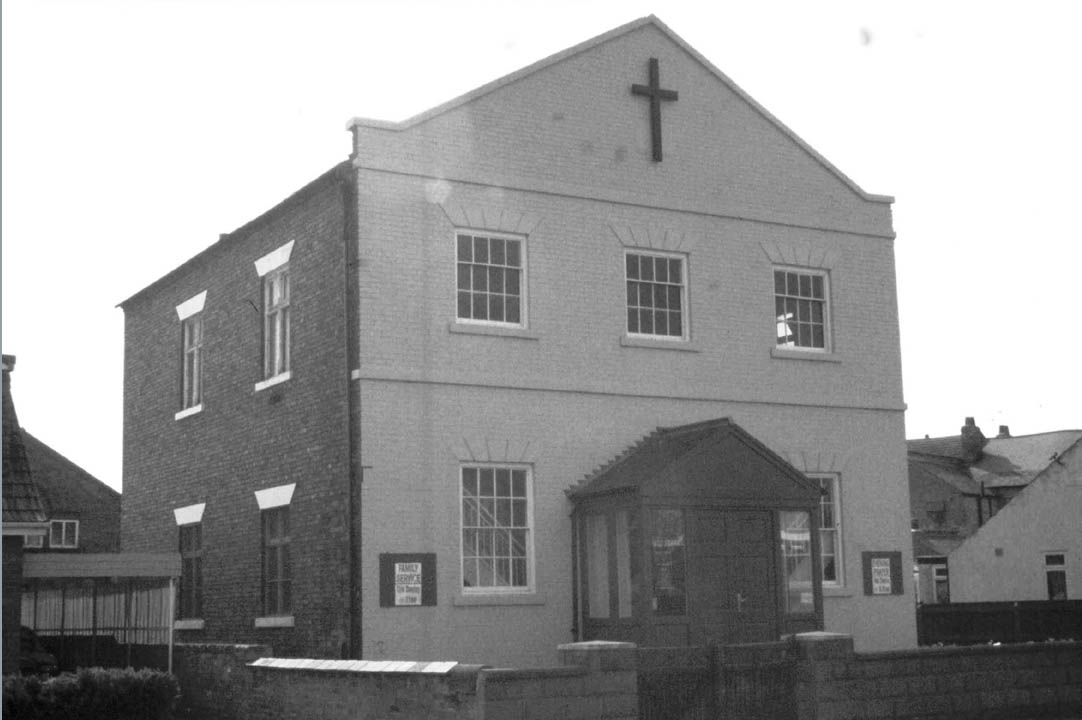
The building above (now an Anglican Church) was the second Wesleyan chapel (erected in 1830) at Draycott. The first is claimed to have been a chapel more than 100 years prior to 1869 when a fund raising event for it took place.
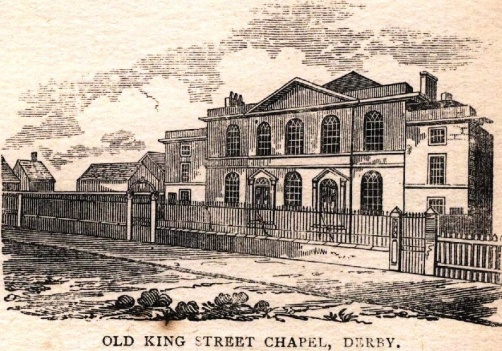
'King Street', seating 800, replaced St. Michael's Lane in 1805 as the principal Wesleyan Methodist Chapel in Derby. The success of the Wesleyan movement required bigger and better places for worship and soon this building was replaced in 1841 by the grand classical building shown, capable of seating 1600 people.
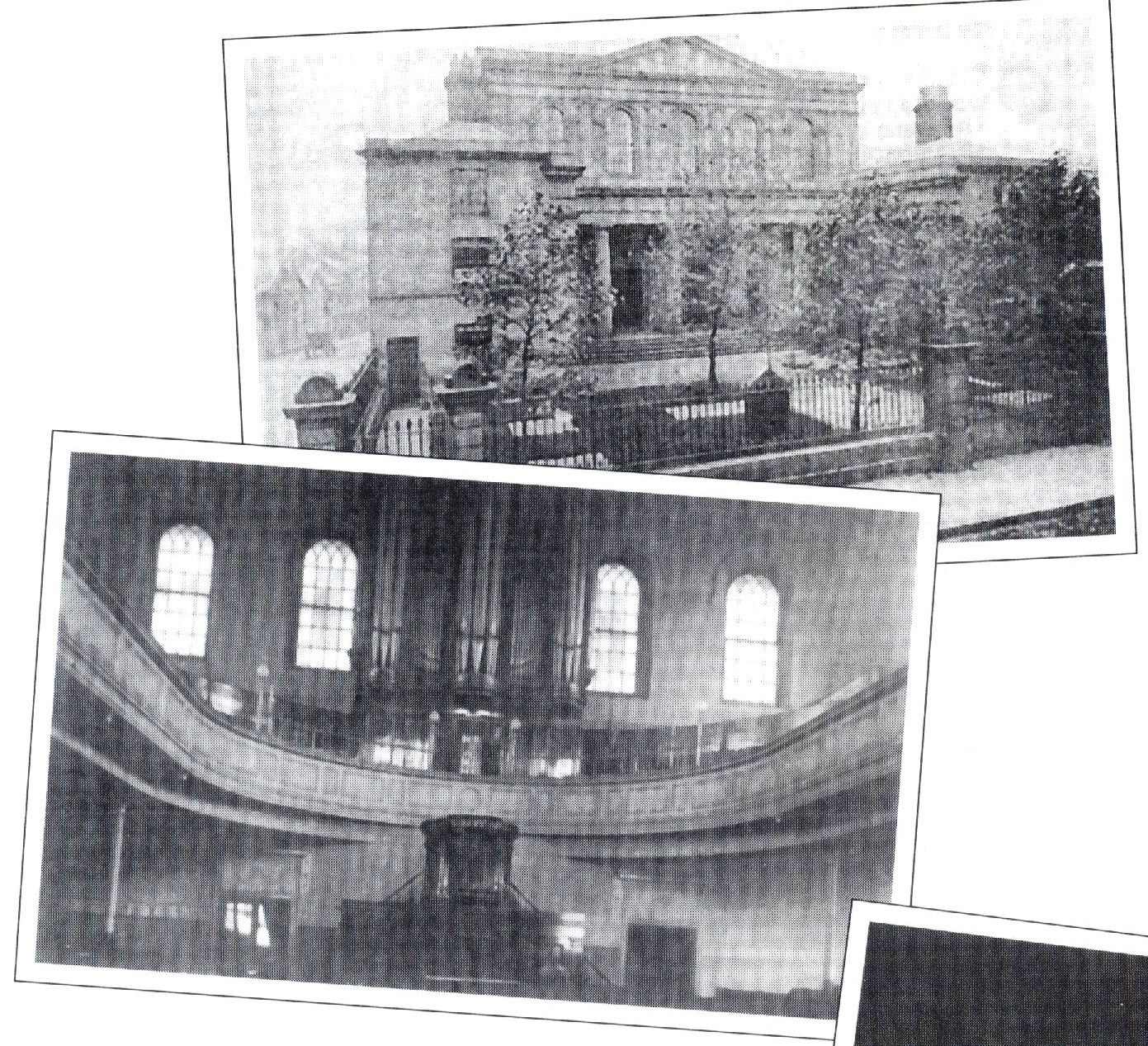
This chapel led to others in the town notably Ashbourne Road and London Road and finally when it closed in 1961 plans were made and funds provided towards the building of St. John's Methodist church at Allestree in 1964. King Street chapel became unsafe in 1950 and the congregation moved to the schoolrooms in Chapel Street. Although the chapel was a Grade II listed building it was demolished to make way for the inner ring road in 1967.
The King Street Chapel school rooms shown below are now used as the Dada dance centre.
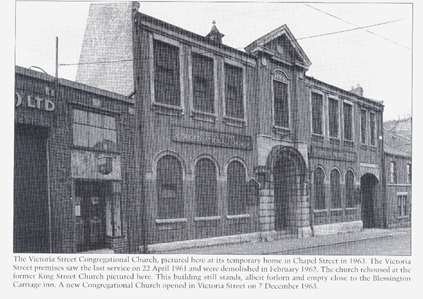
A few people from the Mother Church in Traffic Street went to Gisborne Street where they commenced meetings in a joiner's shop. Shortly after the first chapel was built in 1846. This was replaced by a larger building in 1850. The continued rapid growth led to a third building opposite with the foundation stone being laid in 1870. The Bourne Chapel in Kedleston Street became the biggest Primitive Methodist Church in Derby and the Primitive Methodist Connexional Conference was held there in 1886.
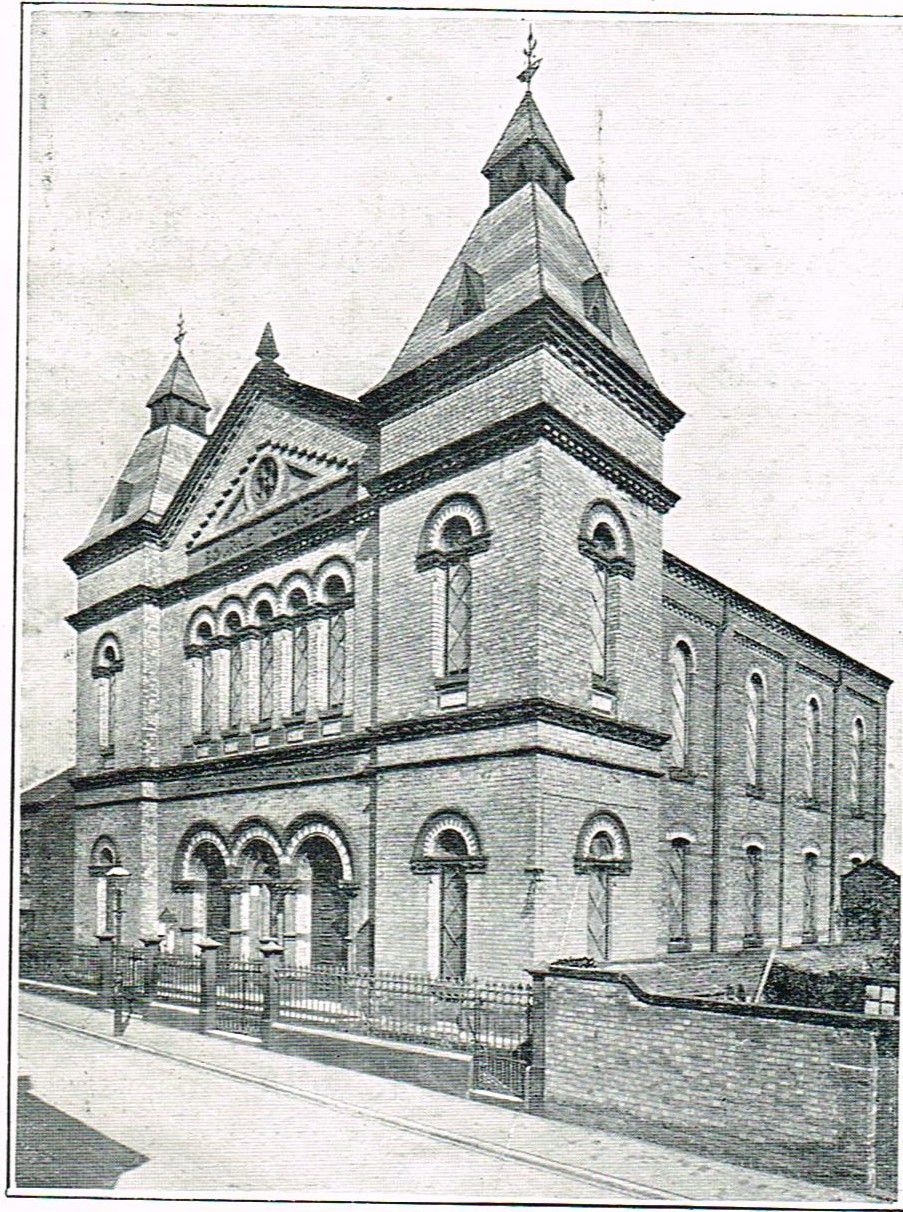
The history of this church is largely bound up with the life of the Rev. William Griffith, who for twenty-eight years was the resident minister. He is buried in Uttoxeter New Road Cemetery.
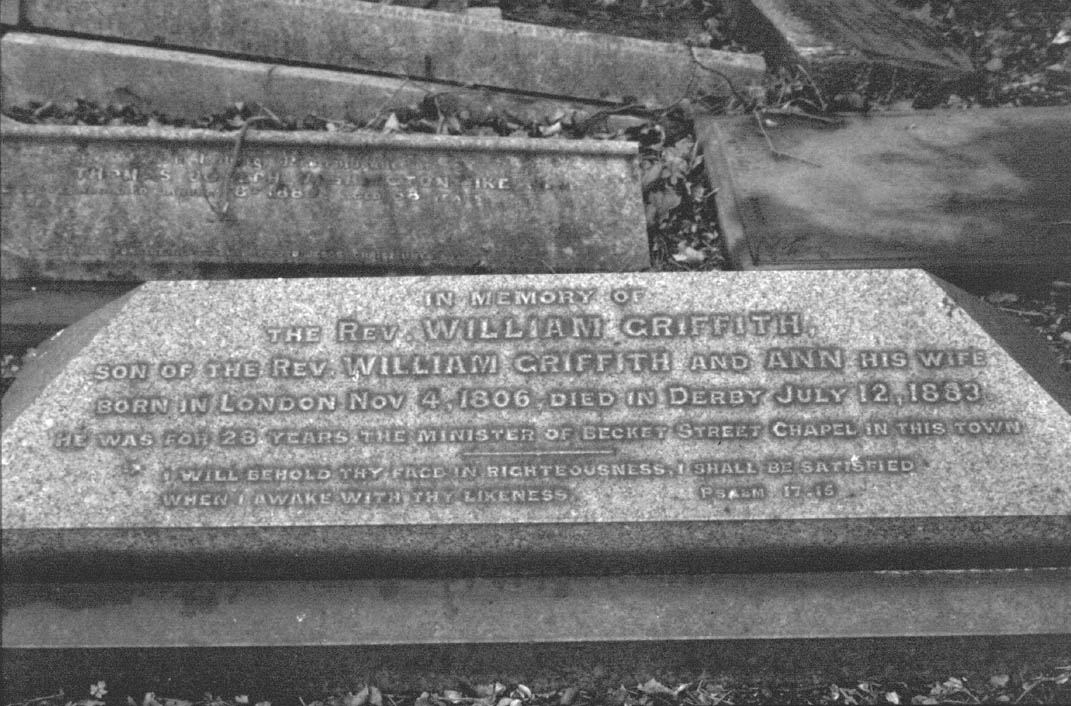
Mr Griffith was one of the central figures of the Wesleyan Reform Movement in 1849, being one of the three ministers who were publicly expelled from the Wesleyan Methodist Connexion at the Conference in Oldham Street Chapel, Manchester in that year.
Strange to say it fell to the lot of Derby to be one of the centres of operations in connection with the great Reform movement which had such a widespread effect upon Methodism in Great Britain.
After its opening in 1857, the church prospered, branches being established at Duffield, Quarndon, Little Eaton, Morley Moor and Darley Abbey, all of which, however, subsequently ceased to be connected with Becket Street.
Footnote
On July 12th 1883 Rev Griffith passed peacefully away and was interred in the Old Cemetery, Uttoxeter New Road, Derby.
By 1850 the Wesleyan Movement claimed 500,000 members. One historian had calculated that some two million people and children were 'under the influence' of Methodism.
The 1851 Religious Census of England and Wales shocked the Anglicans and Nonconformists alike. It was presumed that all respectable citizens worshipped regularly. The census suggested otherwise with less than half of the population attending church or chapel.
By the 2001 census attendees were down to 7% although 80% of the population claimed to be Christians. So as in John Wesley's days if the people do not go to church the church must go to the people.
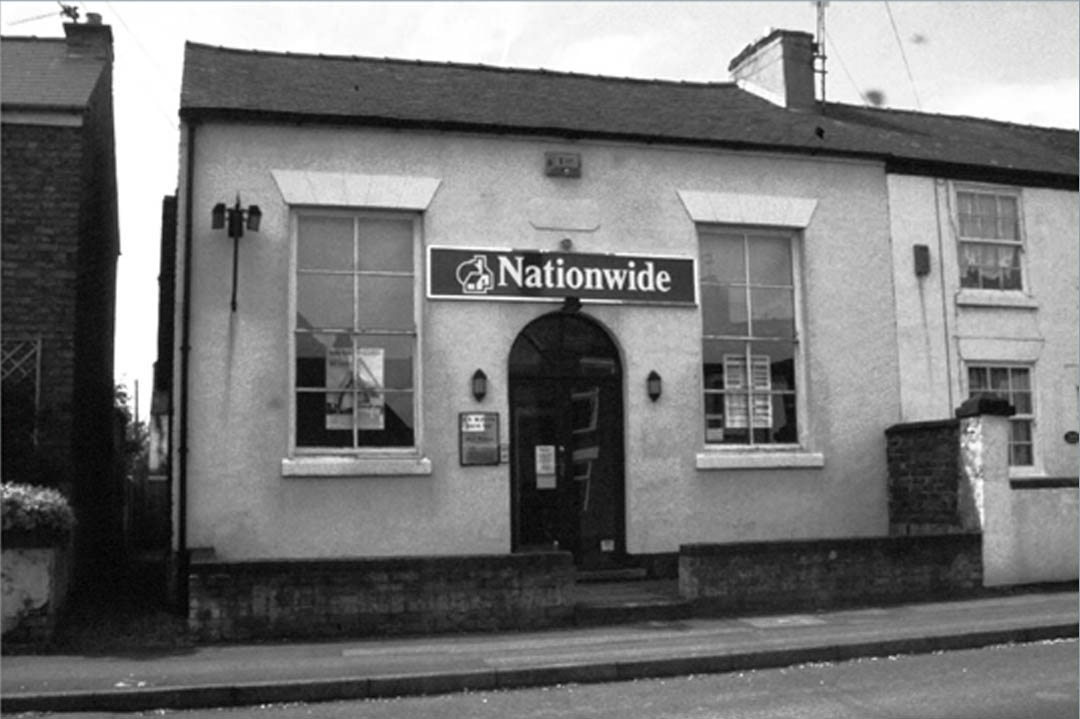
The Primitive Methodist Movement was spreading rapidly and arrived early at Ambaston. Mary Taft preached there and in 1815, Sarah Kirkland, the first travelling preacher in Methodism, conducted a love feast. The Primitives opened a chapel in Ockbrook 1824 and there were probably cottage meetings in Borrowash until they erected their own chapel in 1851 (now the Nationwide Building Society in Victoria Avenue). The Prims soon outgrew their little building and a new chapel opened in 1901
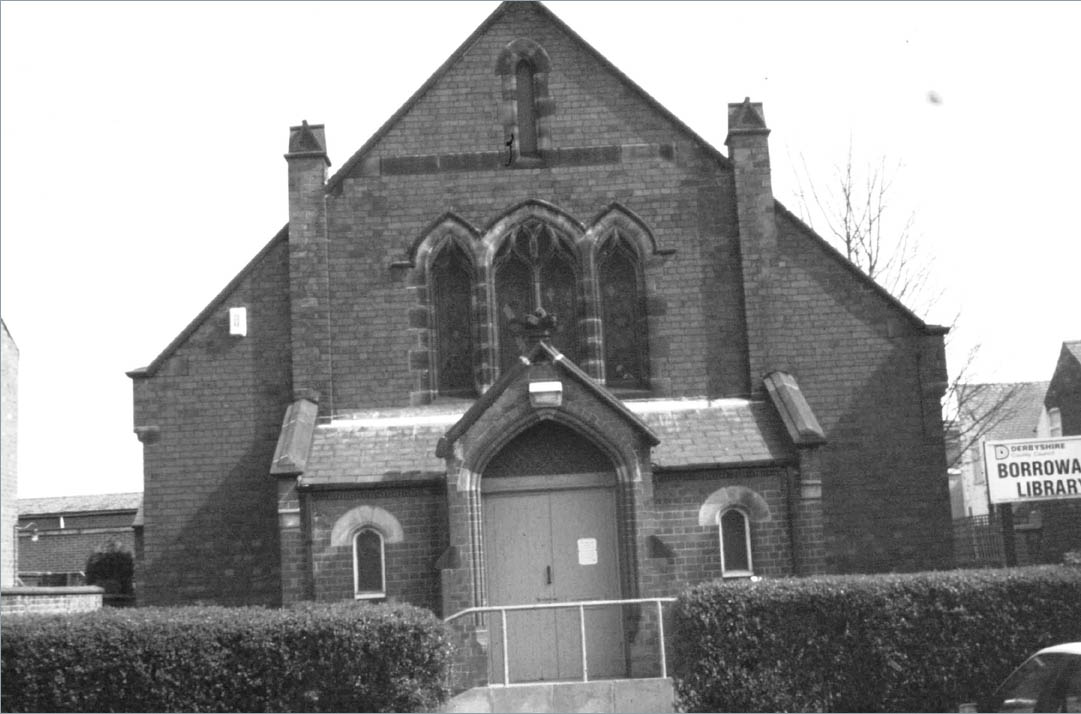
(Now the library also in Victoria Avenue).
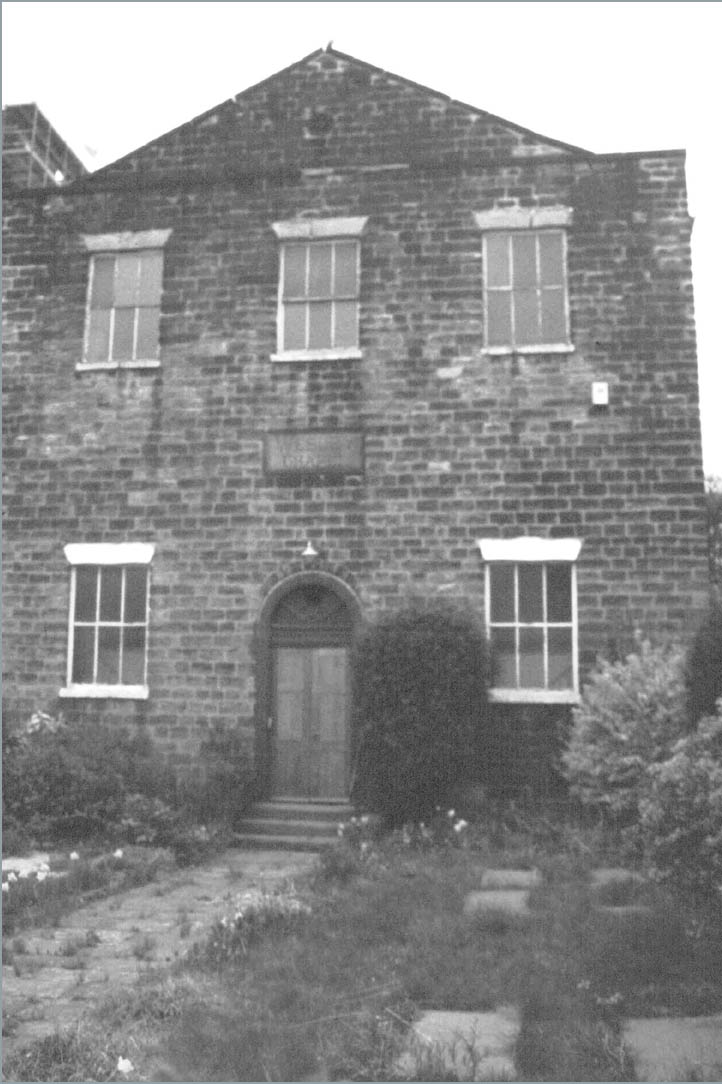
Originally opened July 20th 1802 as a Baptist Church.
Derby Reform Church meetings at the Lancastrian Schools and the Mechanics Institute led to a decision to build a new church at Becket Street. A split resulted in the withdrawal of part of the congregation who ultimately took up abode at Brook Street. The first Wesleyan Reformers Service to be held at Brook Street was on the Lord's Day April 13th in 1856. The last service was held in August 2002.
The history of this chapel and the work of its two churches through two centuries of Christian witness is told in great detail, illustrated with numerous photographs and various maps, in 'A Charge To Keep' by Brian Radford. The book is supplemented with numerous appendices giving access to data including marriages and baptisms that is normally hard to acquire.
Known by the locals as Canal Street Chapel. It had the largest Sabbath School in the area including Nottingham.
In 1848 a joiner's shop in North Street became a Wesleyan cause that led to a Day school opening in 1858 and the London Road chapel completed in 1861. The chapel could accommodate 900 people and the school rooms about 1,500 scholars. In the Derby Circuit Plan of 1859 Four Wesleyan churches were listed - King Street, Greenhill, Canal Street and Litchurch. In its early years the chapel was connected with the King Street Circuit.
As the railway population grew the church expanded adding many rooms. The Day school had 134 teachers, 119 of whom were members of the church.
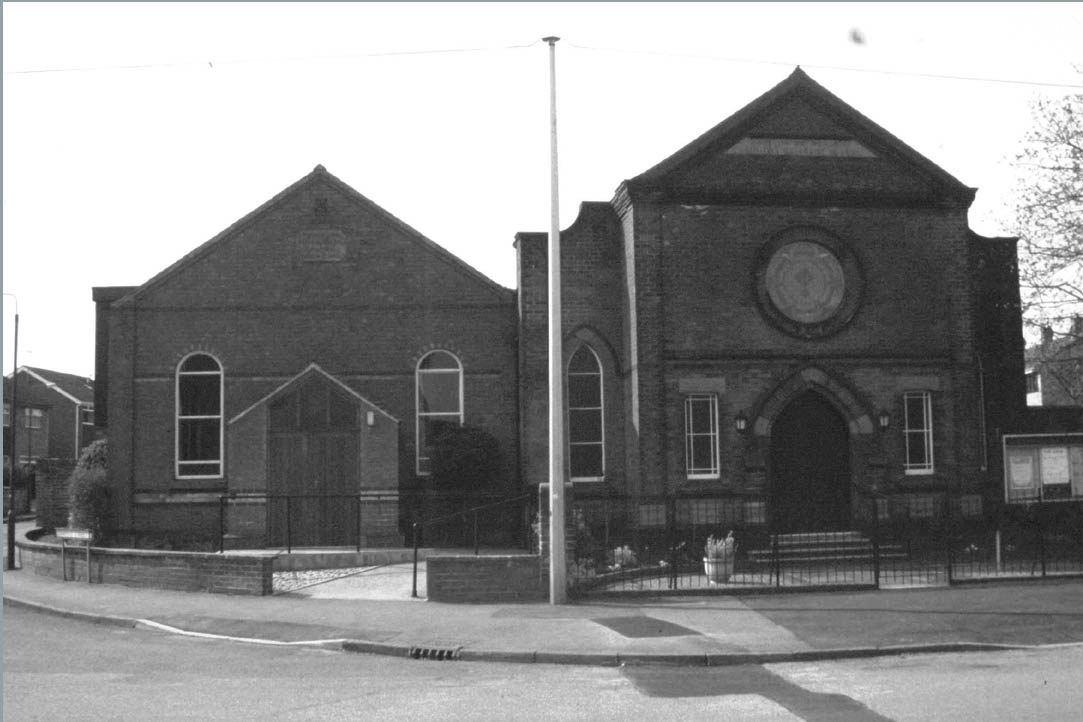
A Primitive Church was first erected in 1865 followed by a bigger church in 1897 on an adjacent site. The Wesleyan Methodists eventually joined the Primitive Methodists in Market Street to form the Draycott Methodist Church in 1966, which is still active today in the Derby East Circuit.
Happily, attempts to unify some of the scattered forces started in the second half of the century. While it still seemed impossible for the Wesleyan Reformers to rejoin the parent body most of them did link up with the Wesleyan Methodist Association which had already united with the Protestant Methodists and the Derby Faith Methodists. In 1857 they held their first United Assembly at Rochdale taking the name 'United Methodist Free Church'.
In 1866 an attempt was made to unite all British Methodists but the ground was not properly prepared. The Primitive Wesleyan Methodists of Ireland rejoined the parent body in 1878.
The King Street safe contained a series of letters that revealed the reason for the Wesleyans having to vacate their chapel built in 1808 on land given by Mr Wallis on coming of age. It was not his to give.
The Wesleyans had been in possession of the land for 62 years in Ockbrook when the following letter arrived:
4 Harington Place,
Bath,
11 July 1870
Dear Sir,
We have to apply to you on a rather unpleasant subject, tho' fortunately one of no very great importance.
Many years ago the late Dr. Wallis assumed to convey a piece of land for the purpose of building a Wesleyan chapel at Ockbrook but he had no right to convey more than his life interest and as he is recently dead the people for whom we act are entitled to the chapel.- No doubt if you will consult your solicitor as the solicitor to the trustees, you will find this to be the fact.-
We fear that the property is so circumstanced as to give us no option but to prosecute in claim. However as we have reason to believe that no money consideration was given for it no great hardship is inflicted upon your body in resigning possession or in making some arrangement to rent or purchase.
During this series of letter the Rev Rhodes wrote to the Wallis family solicitor and received the following reply:
From E.C.Petgrave
4 Harington Place
Bath
28th March 1871.
Reverend Sir,
I am in receipt of your letter on the subject of the claim of the family of the late Dr Wallis to a chapel at Ockbrook the site of which was given by him to the Wesleyan congregation on his coming of age in 1808, with full knowledge both on the part of himself in giving it, and of the parties who accepted it, that he was assuming to convey what did not belong to him. In this letter you very clearly set forth, what in your point of view, should influence the parties claiming the property.
It is after full reflection on this and former instances, on the weight which should attach to moral considerations in the prosecution or abandonment of legal rights, and on the moral philosophy of that subject, that I have arrived at the conclusion, that no appeal founded on such a basis, should ever be made, and that persons who volunteer to be bound by such considerations act unwisely.
An heir at law, (whether worthy or unworthy) who has been disinherited by his parent, has the right to take advantage of the informality of a will - again, public opinion does not censure charitable or religious institutions who avail themselves of posthumous bounty of testators, who give to charity what they have denied to their own kindred - and to take the present case, if the 62 years possession enabled the Wesleyan congregation to defeat the right of the persons legally entitled, they would be quite justified in setting up the statute of limitations, and for the claimants to say that setting up such a defence, would be morally wrong, would be proceeding on false grounds.
After many letters from John Eastlake the following plain speaking resulted
From John EastLake,
Commercial Inn,
Moorwater,
Liskeard,
20 July 1871
Dear Sir,
Am I to understand by your last letter that the Wesleyans will not give up possession of the chapel unless compelled to do so by law? If I am right, you must pardon my saying that you have acted in a very shuffling manner the correspondence has now lasted nearly 12 months and it would have been more candid of you if you had told me your decision at first.
I am of course now withdrawing the offer I made to you and I shall in addition go in for the rent from the date of Dr Wallis' death until the time your people are pleased either to give up possession or be thrashed in a Court of Law.
Yours, John Eastlake.
Rev. Rhodes had been advised by the Wesleyan Society not to fight the issue or pay any more money. The following letter suggests that they vacated the premises and a letter dated 8th August 1871 came from an Estate Agent in Derby requesting the key.
Derby 5 Aug 1871
My Dear Sir,
No doubt a claim can be sustained if they try, do you think they will push the matter further? If they will it will of course be better to compromise in the best way we can.
I have had the --- and things remain but the pulpit, the pews, the singing gallery and the --- --- which are all distinct from the freehold I have not disturbed for the present. Can we not make something of these in the settlement or shall I take them away at once before you complete your bargain.
In that you do I shall be satisfied, only don't gratify them with any more money than you are obliged - justice is all these mean fellows care for.
Kind regards.
The history of Ockbrook Methodists states that the Primitive Methodists then used the premises until 1899, but there was nothing of that in the King Street Safe.
A Mr Joseph Barrett had a large hand in the establishment of London Road. He then established cottage prayer meetings in the Rose Hill area. In 1867 a joiner's shop in Whitaker Street holding 80 people was used for a society class of converts.
London Road initially funded the rent for the basement of the Old Depot Mill (later Offiler's Brewery). This work eventually led to a school chapel opened in 1875. Then a larger building which opened in 1882. Rose Hill finally closed in 1989 and was demolished in 1991.
But that was not the end of Rosehill Methodists. The Rosehill Methodist Fellowship still meet once a month and hold a service in the old Bowls Green Hut at the Rosehill Methodist Sports Ground.
William Riley, a parish clerk complained that Anglican admiration of the Methodists' singing was going so far that their tunes were creeping into churches. He alleged on certain occasions Anglican congregations would pay the clerk and organist to stay away, that two of their people may supply their places; by which means they have everything performed in their own way.
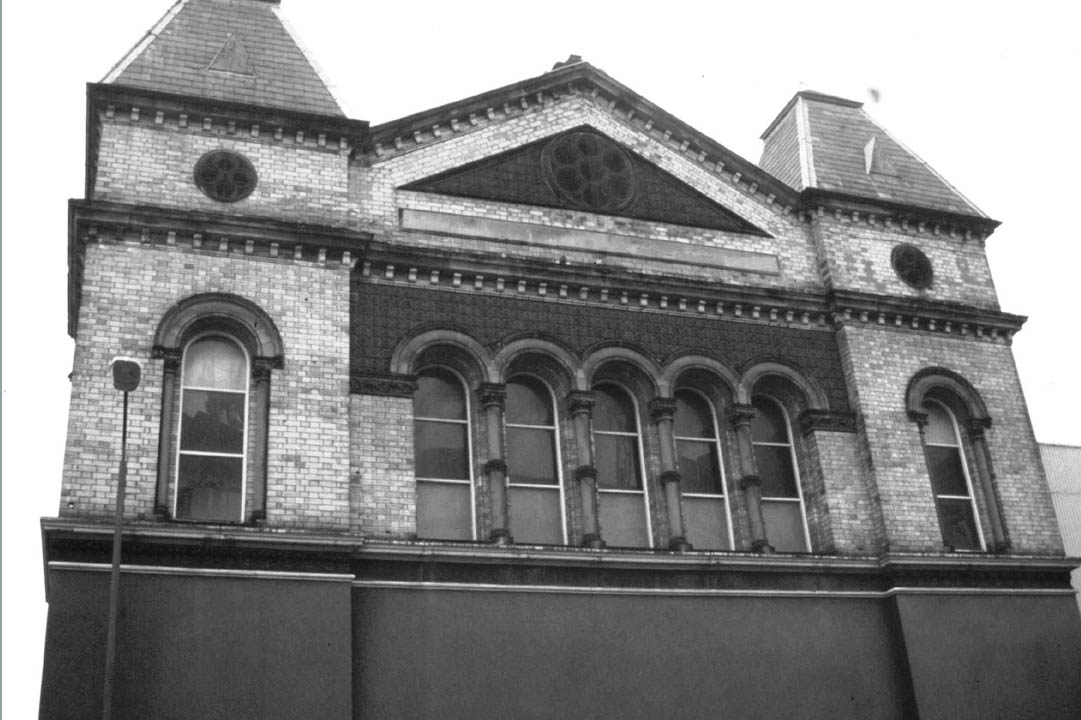
The Primitive Methodist churches at Traffic Street and Kedleston Street were unable to meet the growing needs of central Derby and a forward movement resulted in a Mission in the Athenaeum Rooms, Victoria Street for four years. During this time the Mission organised some of the largest Missionary and Sunday School gatherings ever held in the town. The result was the Central Church, opened in 1878, almost identical to Kedleston Street.
The story begins in 1871 when members of the King Street Congregation realised the need to provide for the spiritual wants of the population in the Ashbourne Road area.
The 'King Street Young Men's Cottage Meeting Society' was an established organisation and three earnest young men commenced meetings in the area. Their success led to the renting of No.1 and No.5 Noel Street where regular services were held.
In 1873 Noel Street appeared on the King Street Wesleyan Circuit Plan. A school Chapel was built and opened in 1878 catering for 250 scholars. After the arrival of the Great Northern Railway in Breadsall in 1875 the line soon reached Friargate and the population in the area grew rapidly. Further fund-raising made possible a new chapel on the corner of Surrey Street, opened in 1885, with seating for over 700 adults.
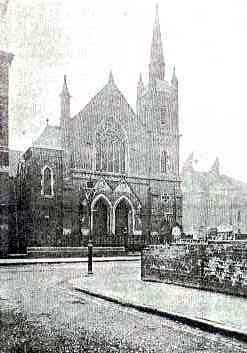
A fine two-manual organ was added in 1895. The chapel has been demolished. When it closed the Sunday school was used for services until the new Church, built on the same site, opened in 1998. Ashbourne Road remains active in the Derby Derwent Circuit.
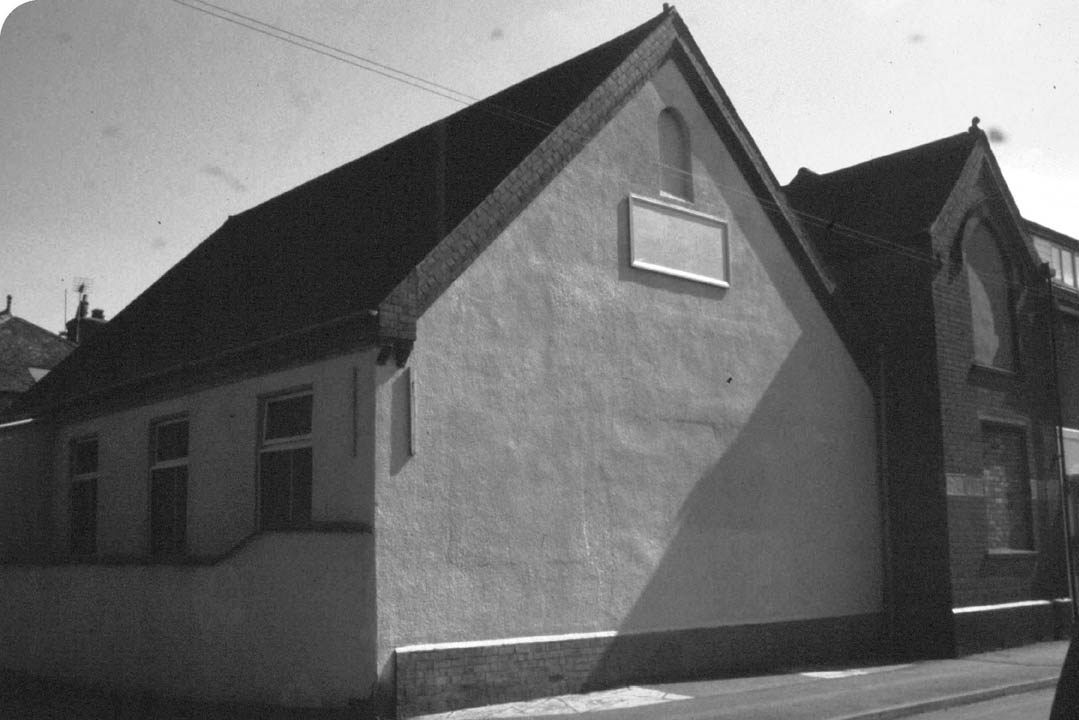
An example of a small Primitive chapel (opened c1890). Now closed and unnoticed by passing people.
Temperance began as a personal crusade. Late in the nineteenth century it became one of the issues urged on the government by nonconformity. Control of the brewers and distillers, it was argued, would save money. Taxes and rates would be reduced if the state could 'prevent the crime that proceeds from drinking instead of eating barley'.
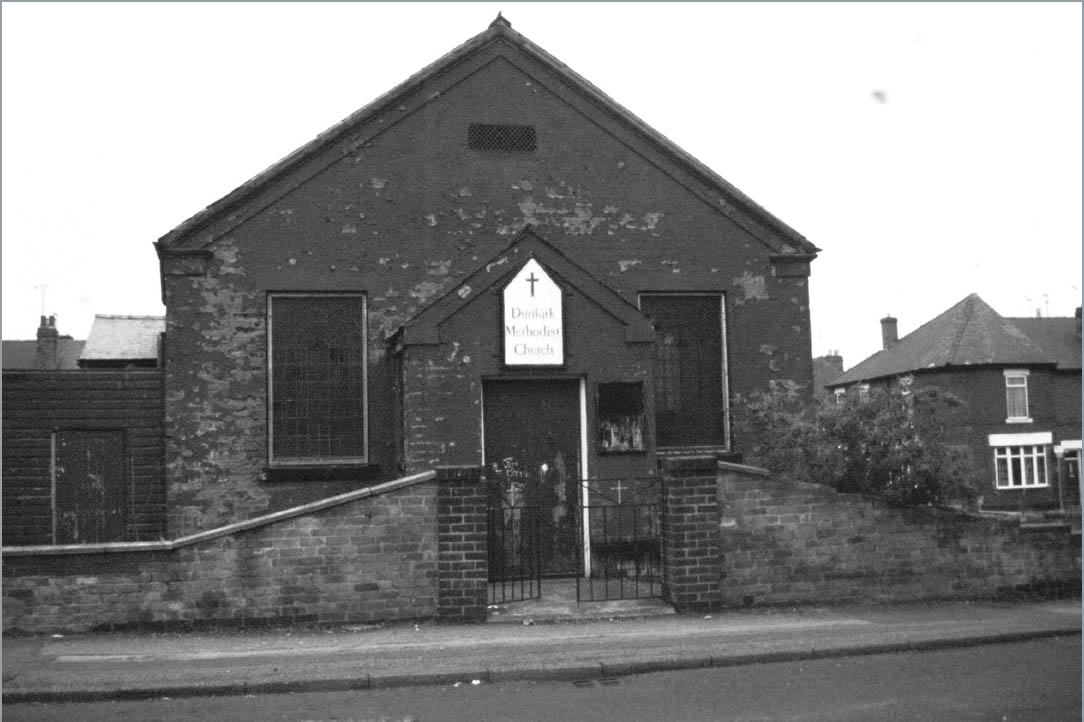
Three brothers named Collier, from King Street Chapel, started a Society from a front room in a cottage in Parliament Street. Soon after, in 1863, a room in a mill was used, since demolished. In 1864 the schoolroom was built and in 1893 the corrugated iron chapel was built, similar to the Osmaston chapel. The chapel was named Dunkirk.
The Sabbath School was the most prominent feature of the chapel with 400 scholars. Later the Church became well known for its Youth work in the 1950's, 60's and 70's led by Cyril Wilkins, ably supported by Ivy, his wife, and many other committed Methodists. The iron chapel was removed and a Youth Centre erected in 1964.
The services continued in the original Schoolroom until it closed to a full house in 1999. Many of the people who were part of the youth activities returned for that final service.
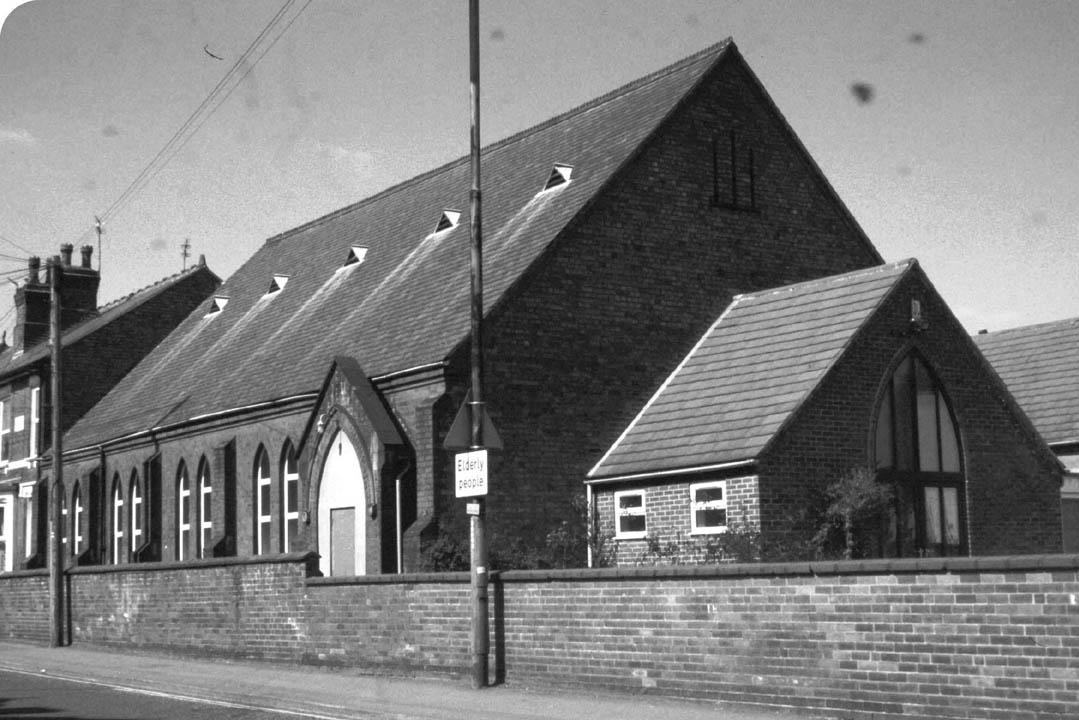
In 1890 workers connected with the Rose Hill Wesleyan chapel opened a branch in a small room in Prince's Street, Pear Tree. It soon became successful and overcrowded and moved to the Wooding Institute. The Institute, originally built as a Temperance Public House, was rented in 1893 until sold in 1896 to the St Thomas church. Plans were made for a new church on a site previously purchased on the corner of Walbrook Road.
The Wesleyan branch continued to meet in St James' Road Board School until August 1897 when the new chapel, shown above, opened in Walbrook Road.
Since it closed as a Methodist Church c1989 it is another example of a church continuing under another denomination, 'All Nations for Christ Christian Fellowship'.